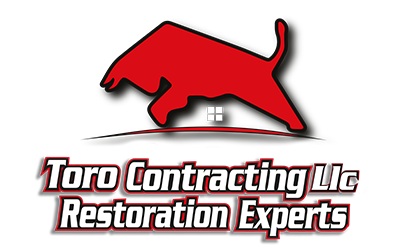Many homeowners find themselves stuck in a loop of traditional flooring choices: plain hardwood, simple tiles, or unremarkable carpets. Yet, creative floors patterns and textures offer a fresh perspective, transforming even the most minimalistic rooms into stunning showcases of personality and innovation. But what exactly makes flooring truly “creative” and how can you incorporate these ideas seamlessly into your modern home?
Prepare to learn practical tips about choosing the best materials, mixing colors and textures, and playing with patterns that bring harmony without overwhelming your room. By the end of this read, you’ll not only understand why creative floors patterns and textures can revolutionize modern interiors but also how to implement them with confidence and flair. Ready to step onto a world where flooring is more than just a surface? Let’s dive in!
Why Creative Floors Patterns and Textures Are More Important Than You Think
When it comes to designing modern spaces, the floor often takes a backseat to walls, furniture, and lighting; however, creative floors patterns and textures play a pivotal role in shaping the overall ambiance and functionality of any room. These elements are not just decorative accents, they are foundational design choices that influence how a space is perceived, experienced, and used.
Creative flooring patterns range from geometric mosaics to organic swirls, and textures can vary from smooth and polished surfaces to tactile, rough finishes. By thoughtfully combining patterns and textures, designers can transform an ordinary floor into a captivating canvas that enhances spatial dynamics. According to a 2022 study by the International Interior Design Association, spaces with visually interesting flooring see a 30% increase in occupant satisfaction and creativity. This statistic underscores the powerful psychological impact that creative floor designs have on modern living and working environments.
Consider the example of a tech startup office in San Francisco that revamped its bland concrete floors by introducing a mix of hexagonal tiles in matte and glossy finishes, creating a dynamic pattern that guides visitors through different zones. This flooring choice didn’t just modernize the office aesthetically, it also energized the workspace, boosting employee morale and encouraging collaboration. The team reported a 20% increase in brainstorming session effectiveness within three months of the redesign.
Furthermore, the rise of eco-conscious materials and innovative manufacturing techniques has expanded the possibilities for creative floor patterns and textures. Sustainable options like bamboo tessellations or recycled glass aggregate embedded in resin allow designers to marry artistry with environmental responsibility. This blend is vital for modern spaces aiming to reflect current values without compromising on style or durability.

How to Apply Creative Floors Patterns and Textures Step by Step in Modern Spaces
Transforming a room with creative floors patterns and textures can breathe new life into any modern space. But knowing where to start and how to execute your vision can be challenging. To help you achieve the perfect blend of style, comfort, and function, here’s a detailed step-by-step guide on how to apply creative flooring patterns and textures effectively.
Step 1: Understand Your Space and Style
Before diving into the exciting world of creative floors patterns and textures, it’s critical to assess your space carefully:
– Measure your room precisely to know how much material you’ll need.
– Observe natural light sources and note how they affect the appearance of floors at different times of the day.
– Identify your preferred interior style (minimalist, industrial, eclectic, etc.) as it will influence your choice of patterns and textures.
– Consider the room’s function to pick flooring that balances aesthetics with durability.
For example, a high-traffic living room may benefit from textured floors offering grip and wear resistance, while a modern office can experiment with geometric patterns that inspire creativity.
Step 2: Choose the Right Flooring Material
Creative floors patterns and textures can be achieved with a variety of materials. Here’s a quick comparison:
– Wood: Offers natural textures, allowing for beautiful chevron or herringbone patterns.
– Ceramic or Porcelain Tiles: Perfect for intricate geometric designs or mosaic textures.
– Vinyl Flooring: Versatile and budget-friendly, suitable for replicating wood or stone patterns.
– Concrete: Excellent for bold, minimalist textured patterns such as stamped or stained finishes.
– Carpet Tiles: Add soft textures with modular pattern possibilities.
Select materials that complement your space’s use and desired aesthetic. For instance, polished concrete with a subtle textured finish may be ideal for a chic urban loft, providing both durability and style.
Step 3: Decide on the Pattern or Texture
Now comes the fun part: selecting your pattern or texture. Here are popular options with design tips:
– Chevron Pattern: Creates a dynamic, directional flow ideal for elongating small spaces.
– Herringbone: Offers a sophisticated and timeless feel.
– Hexagonal Tiles: Introduce a modern geometric vibe perfect for kitchens or bathrooms.
– Textured Concrete: Adds tactile interest while maintaining minimalist design.
– Mix-and-Match Tiles: Combine various colors or patterns for an eclectic modern look.
Use software tools or mood boards to visualize your pattern before purchase. Many flooring companies and interior design apps now support 3D modeling to help you preview how creative floors patterns and textures will look in your actual room.
Step 4: Prepare the Subfloor
Good preparation is fundamental to achieving a flawless finish for your creative floors patterns and textures:
– Remove any existing flooring and clean the subfloor thoroughly.
– Check for cracks or uneven areas and repair them.
– Ensure the subfloor is dry and level, imperfections can distort patterns visually and physically.
– For textured floors, applying a primer might be necessary to ensure strong adhesion.
Depending on your flooring material, follow manufacturer guidelines regarding any special preparation steps.
Step 5: Install the Flooring with Precision
Installation is the moment where your creative floors patterns and textures come to life. Whether you hire professionals or take on a DIY project, pay close attention to detail:
– Lay out tiles, boards, or planks beforehand to ensure the pattern aligns correctly.
– Use spacers to maintain uniform gaps if working with tiles.
– For hardwood patterns like herringbone, start from the center of the room and work outward for perfect symmetry.
– Frequently check alignment with a chalk line or laser level.
– Allow for expansion gaps if required, especially with wood or vinyl.
Remember, taking your time during this phase prevents costly mistakes and guarantees that the creative flooring elevates your modern space as intended.
Step 6: Apply Finishing Touches
Once installation is complete, the finishing stage enhances both the look and longevity of your creative floors patterns and textures:
– Apply sealants or finishes suitable for your flooring material to protect against stains and wear.
– Consider adding area rugs or mats that complement, rather than clash with, your floor patterns.
– Keep maintenance routines to preserve texture definition, especially for tactile flooring like textured concrete.
Tips for Creative Floors Patterns and Textures for Modern Spaces:
🎨 Mix and Match Textures: Combine smooth, polished surfaces with rough, matte finishes to add depth and interest.
🧩 Geometric Patterns: Incorporate hexagons, chevrons, or herringbone designs to create a modern and dynamic feel.
🌈 Bold Color Choices: Use vibrant or contrasting colors in flooring to make a strong design statement while maintaining harmony with the room.
⚖️ Balance with Simplicity: Pair intricate floor patterns with minimalist furniture and decor to avoid overwhelming the space.
🪵 Natural Materials: Integrate wood or stone textures to bring warmth and organic vibes into contemporary interiors.
🔲 Large-Scale Patterns: Opt for big, bold patterns rather than tiny repetitive designs to keep the floor visually impactful without clutter.
💡 Use Rugs Strategically: Add textured or patterned rugs to enhance or soften existing floor designs, providing layered visual interest.
🌀 Play with Movement: Choose swirling or wave-like patterns to introduce fluidity and motion, making your modern space feel lively and inviting.
✅ Tip: Always consider the proportion of the room, larger patterns work best in spacious areas, while subtle textures suit smaller rooms.
❌ Avoid Overdoing It: Too many patterns or textures can clash and create visual chaos; keep a cohesive theme for a polished look.
Key Concepts
When engaging with creative floors patterns and textures for modern spaces, it’s key to recognize that floor surfaces do far more than simply cover ground; they are the foundational canvas where architecture and interior aesthetics meet, telling stories that shape human experience.
Patterns as Visual Rhythms and Storytellers
Patterns on floors function like the rhythm in music or the meter in poetry, providing a structured yet expressive visual cadence. They guide movement and perception, much as a leitmotif anchors an unfolding narrative. For example, the classic herringbone pattern unfolds like a chessboard, its interlocking lines creating a sense of purposeful motion and order. Meanwhile, organic freeform or asymmetrical patterns evoke spontaneity, echoing natural phenomena like rippling water or leaf veins. This diversity engages viewers on a subconscious level, transforming a pedestrian walk into a sensory journey.
In modern interiors, where minimalism often dominates, patterned floors inject character without cluttering space. They balance restraint with surprise, allowing geometric repetition or irregular mosaics to become the subtle protagonists of the room’s story. Patterns can manipulate spatial perception, making rooms feel wider, longer, or more intimate, similar to how a plot twist changes the reader’s emotional landscape.
Texture: The Invisible Dialogue of Surfaces
Texture adds depth beyond the visual, entering the realm of touch and light interaction. Imagine a floor as a finely crafted novel: texture is the voice inflection that adds nuance to each word. Rough, grainy surfaces bring raw earthiness; polished smoothness reflects an urbane sophistication; undulating relief can mimic natural landscapes, blurring boundaries between inside and outside.
In modern spaces, texture often serves as a counterpoint to sleek, flat surfaces. The interplay between matte concrete and polished wood, or embossed tiles and bare plaster, creates tension and harmony simultaneously, a paradox reminiscent of literary contrasts like chaos and order or past and future. This tactile complexity fosters a richer spatial experience, where every step reveals new details.
Materiality and Symbolism Embedded in Patterns and Textures
Materials chosen for floor patterns and textures carry cultural and symbolic weight. For instance, wood’s organic grains invoke warmth and tradition, stone conveys permanence and connection to the earth, while metals and composites suggest innovation and progress. In modern spaces, blending these materials can be akin to narrative juxtaposition, layering histories and ideas within a single frame.
Textures and patterns also tap into archetypes: cobblestones evoke ancient streets filled with stories; geometric tiles recall artisanal crafts and deep-rooted human expression. Using these elements consciously allows floors to become storytellers themselves, elucidating identity, place, or mood without uttering a single word.
The Psychological Impact of Floors’ Visual and Tactile Elements
Beyond aesthetics, patterns and textures on floors influence human psychology and behavior. They anchor attention and can evoke comfort or stimulation, much like certain narrative techniques affect reader engagement. A busy pattern might energize and captivate, while a subtle, textured surface might soothe and ground. In modern design, where open plans and neutral palettes prevail, creative floors introduce emotional resonance and subtle complexity.
Walking across various textured floors also heightens bodily awareness and mindfulness, orchestrating an immersive experience similar to how a novel’s sensory details immerse readers in its world. This dynamic underscores the powerful role of floors as silent yet vital participants in spatial storytelling.
Integration with Light and Space: Floors as Dynamic Canvases
Floor patterns and textures do not exist in isolation, they interact continuously with natural and artificial light, shadows, and the architecture encasing them. As the day progresses, light shifts reveal hidden facets of texture and accentuate the geometry of patterns. Like a story interpreted differently depending on its reader or context, a floor’s visual output transforms with environmental changes.
In modern spaces emphasizing openness and fluidity, floors become dynamic canvases, responsive and integral to the overall design narrative. They communicate movement, passage, and transition, supporting the evolving function and mood of the space.
Exploring creative floors patterns and textures for modern spaces thus unveils a rich lexicon of visual, tactile, cultural, and psychological elements. Far beyond mere surface treatment, floors embody stories of form, function, and feeling, grounding every modern space in layers of meaning waiting to be uncovered beneath every step.
Frequently Asked Questions
❓ What are some popular creative floor patterns for modern spaces?
Popular creative floor patterns include geometric shapes, herringbone, chevron, hexagonal tiles, and abstract designs. These patterns add visual interest and can define the style of a modern space, making it feel dynamic and unique.
❓ How do textures influence the feel of a modern floor design?
Textures play a crucial role in creating depth and warmth in modern spaces. Materials like wood, concrete, and textured tiles can give floors a tactile quality, enhancing comfort and adding contrast to sleek, minimalist interiors.
❓ Can creative floor patterns work in small modern spaces without overwhelming them?
Absolutely! Selecting subtle patterns or smaller-scale designs helps maintain balance in small areas. Light colors and consistent textures can prevent the floor from dominating the room, while still adding a creative touch.
❓ Are creative floor patterns and textures durable for high-traffic modern homes?
Yes, many modern flooring materials with creative patterns, such as porcelain tiles or engineered wood, are designed to be durable and easy to maintain, making them suitable for busy households without sacrificing style.
❓ How can I combine different textures and patterns without making my space look chaotic?
The key is to maintain a coherent color palette and balance bold patterns with more neutral or solid textures. Mixing textures often works best when one element is the focal point and the others support it subtly, creating harmony rather than clutter.
Using creative floors patterns and textures for modern spaces is an excellent way to personalize your home while maintaining a sophisticated aesthetic. Exploring these options thoughtfully ensures your floors become a statement piece rather than just a backdrop.






